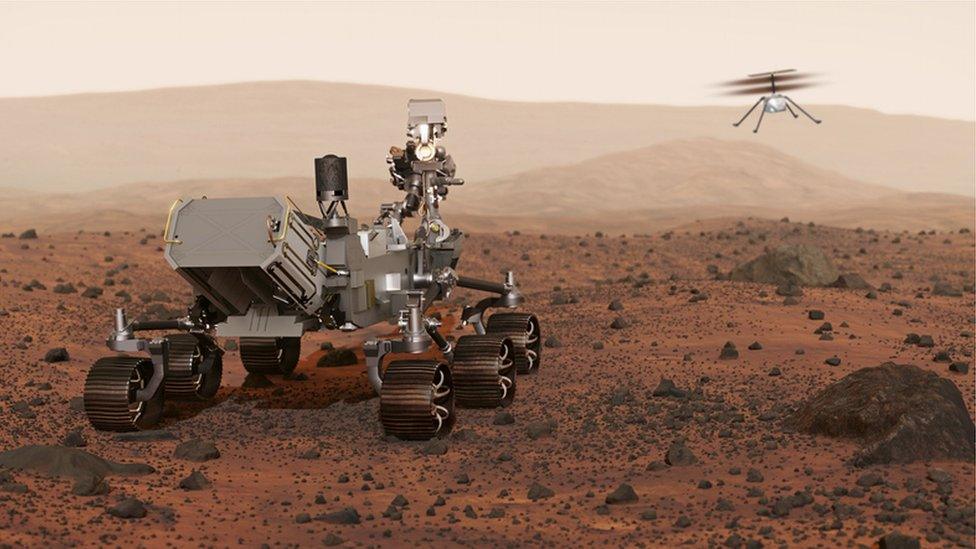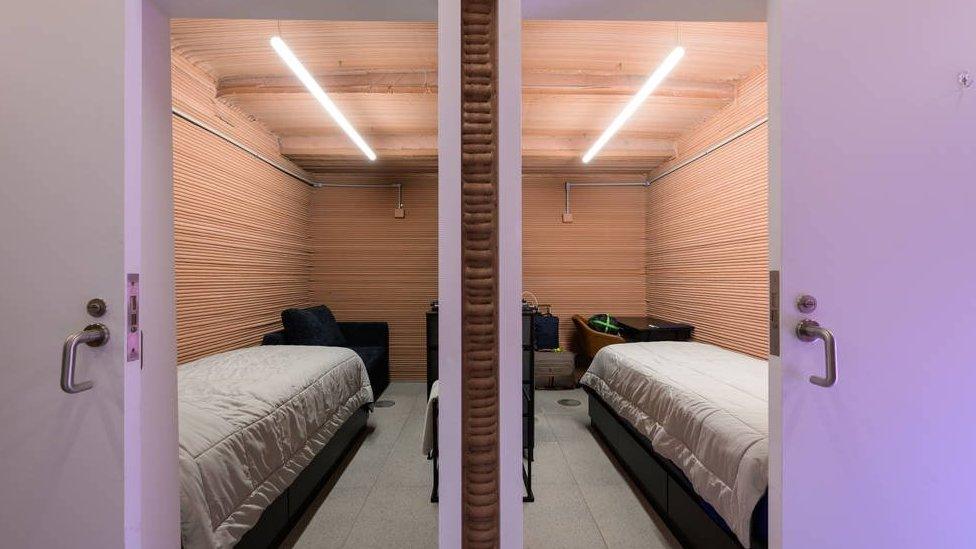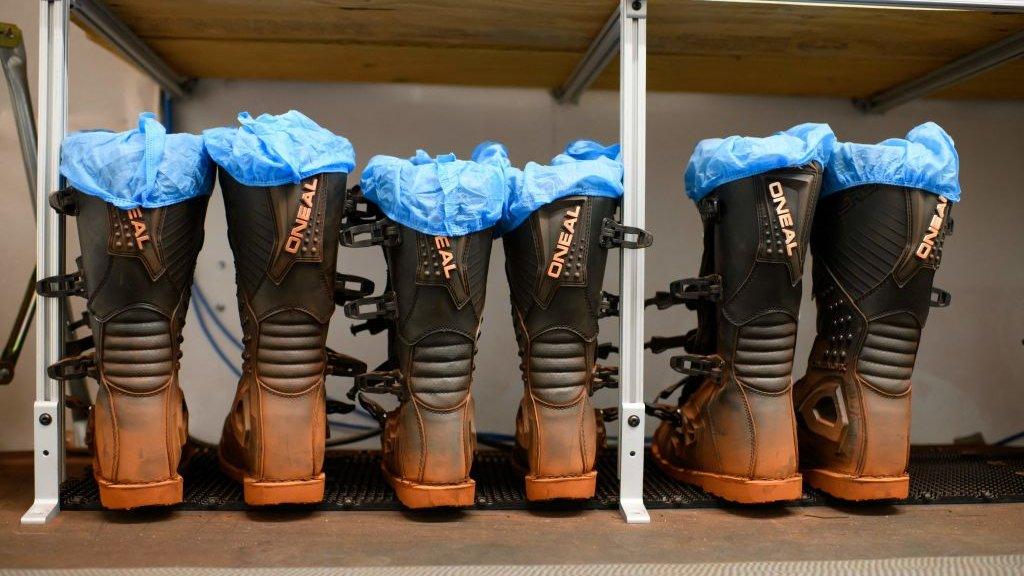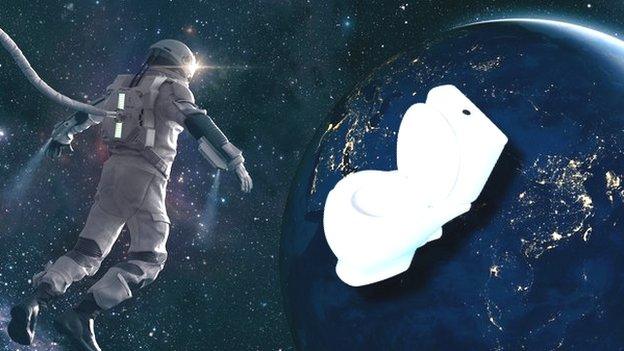Mars: Scientists start a year of living in simulation pod
- Published
- comments

Almost like a highly scientific movie set - the CHAPEA mission hopes to find out what living on Mars could be like.
"CHAPEA Mission One is a-go!"
Those were the words as the door closed behind four volunteers on Nasa's year-long mission to "Mars".
OK, so it's not actually the planet Mars! It's actually a simulator pod at Johnson Space Centre in Houston, Texas in the United States.
But the CHAPEA or "Crew Health and Performance Exploration Analog" mission sees four scientists and engineers live in a small space built to simulate life on Mars.
The volunteers are now living in a 1,700 square feet space, which is around the size of two average three bedroom homes, for the next 378 days.
What will the CHAPEA scientists do?
Mars simulation: Could we live on the red planet?
While in there, they will conduct various experiments to measure the impact of life on Mars for possible future missions to the red planet.
The space is 3D printed and consists of four bedrooms, a dining/living area, a workspace with a vertical farm to grow things and a medical room.
They crew will be given a series of challenges that mirror those of a true Mars mission.
They will have to overcome equipment failure, communication delays and environmental stressors.

The mission is all about preparing to send humans to Mars
The aim of the mission is to measure the human impact of possible future Mars exploration trips.
The crew all took a moment to say a few words before entering the Mars Dune Alpha, with Nathan Jones, medical officer saying goodbye to his wife and children.
"I love you to the Moon - I'm sorry - to Mars and back!" he said.

The sleeping quarters in the Mars Dune Alpha look cosy!
The crew were heard cheering from behind the door after it was closed behind them.
Crew commander Kelly Haston said the "crew has worked so hard this month to get ready for this mission."
"It has been very special to be a part of such a tremendous group of scientists and specialists from a diverse set of backgrounds working together to bring CHAPEA 1, the first of three missions, to reality."
- Published14 April 2023

- Published27 June 2023

- Published29 October 2013

